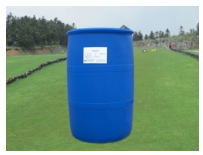Biosurfactants are the rising star in the surfactant family. They are a kind of biological macromolecular substances with surface activity produced by microorganisms. Most of them are produced by bacteria, yeasts, fungi (molds). Biosurfactants produced by microorganisms can be divided into five categories according to their chemical composition and microbial sources, including glycolipids, fats, polysaccharide protein complexes, phospholipids and fatty acids or neutral lipids. Many microorganisms can secrete biosurfactants (see Table 1). Most biosurfactants are anionic, and their CMC is usually in the range of 1-200 mg / L, and its molecular weight ranges from 500 to 1500 da. A kind of

It was found that many genera of Pseudomonas, including Pseudomonas sulcus, Pseudomonas malachita, Pseudomonas de aquinha, Pseudomonas membranaceus, Pseudomonas oryzae, Pseudomonas crosswell, Klebsiella, colorless bacteria, Flavobacterium and Micrococcus can degrade surfactants, However, for high concentration surfactant wastewater, the degradation activity of these bacteria will be limited to a certain extent.
Adsorption method is to use the porous and large specific surface area of adsorbent to adsorb pollutants in wastewater on the surface, so as to achieve the purpose of separation. The commonly used adsorbents are activated carbon, adsorption resin, diatomite, kaolin, etc. The adsorption capacity of LAS on activated carbon can reach 55.8 mg / g. the adsorption capacity of activated carbon conforms to Freundlich formula. However, the energy consumption of activated carbon regeneration is large, and the adsorption capacity after regeneration is reduced to varying degrees, which limits its application. Natural clay mineral adsorbents are abundant, cheap and widely used. In order to improve the adsorption capacity and adsorption rate, the research focus on the adsorption performance, processing conditions and surface modification.
Most of the new generation fabric softeners contain water-soluble groups, such as ester bond, amide group or hydroxyl group. They are easily decomposed into C18, C16 fatty acids and small cationic metabolites by microorganisms, and have little environmental damage.
In recent years, polyamine cationic surfactants have also been used in fabric softeners, especially linear polyamines and recyclable polyamines with low molar mass make the fabric softer after treatment, which can reduce the damage to the fabric. High performance polysiloxane softeners can reduce the friction coefficient of the fiber, improve the resilience, reduce the rigidity of the bond, the hysteresis of bending and shear resistance, and endow the textile with luxurious softness. In addition, it can reduce the energy loss of the fiber during shearing. The main representative products are amino polysiloxane crude emulsion and microemulsion.